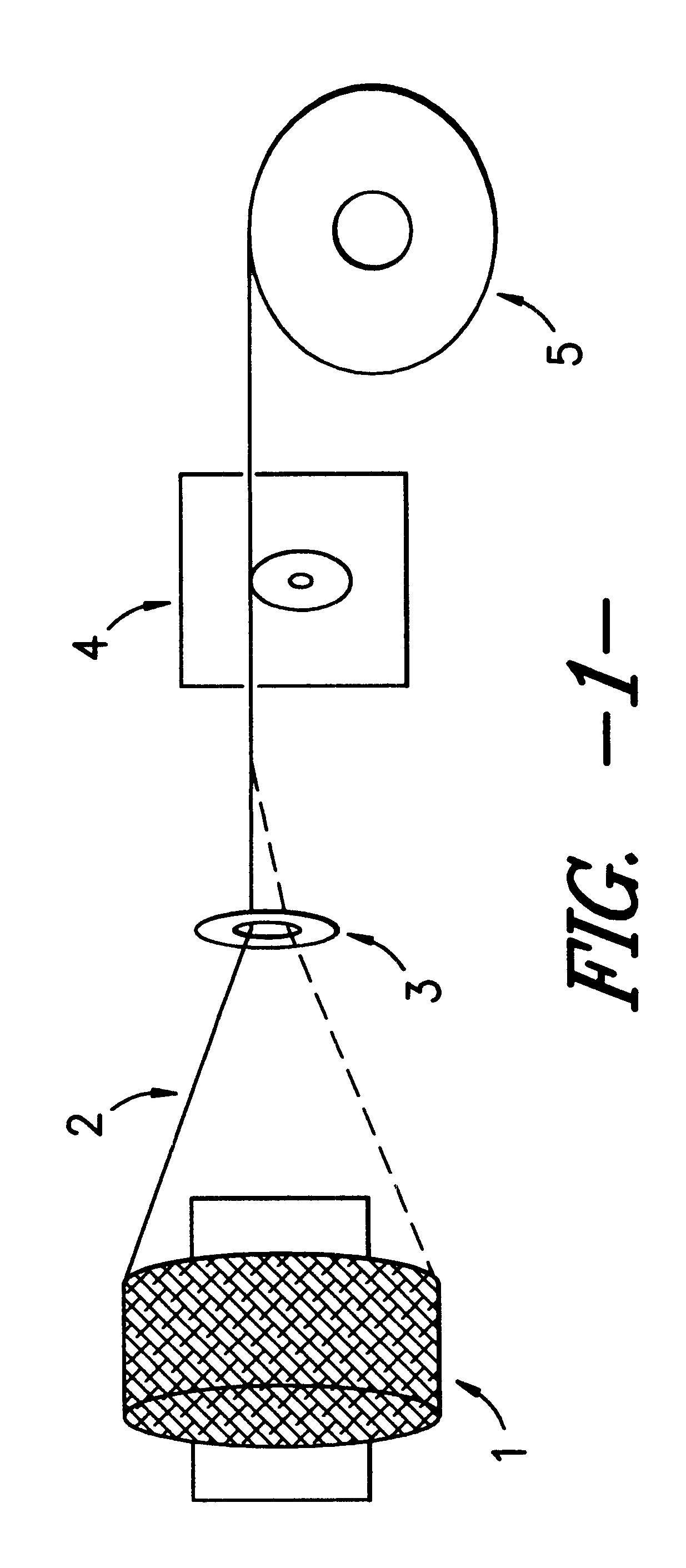Anti-tack spandex fibers containing antimicrobial agents therein and fabrics made therefrom
a technology of antimicrobial agents and spandex fibers, which is applied in the direction of synthetic resin layered products, monocomponent polyurethane artificial filaments, textiles and paper, etc., can solve the problems of low antimicrobial activity, compounds that do not provide antimicrobial characteristics, and sheath-core yams that do not provide any appreciable increase in antimicrobial activity, etc., to achieve excellent processability, low, if not non-existent, and excellent processability
- Summary
- Abstract
- Description
- Claims
- Application Information
AI Technical Summary
Benefits of technology
Problems solved by technology
Method used
Image
Examples
example 1
Pellethane 2130-70A pellets were were placed in a KitchenAid Proline Model KSM5 mixer and 0.5% AlphanSan.RTM. RC5000 was added. The mixer was run for 30 minutes to ensure uniform coating of the pellets and then dried in a vacuum oven at 105.degree. F. for 24 hours to remove any residual moisture, The coated pellets were then melt extruded, coated with spin finish (Kelmar.RTM. 660) to a finish on fiber (owf) level of 2.5% and the fiber was wound on a package. The average take-off tension and tension transients were then measured according to the above-mentioned test method. After fiber production, it was noted that the antimicrobial was dispersed throughout the fiber structure.
example 2
Pellethane 2130-70A pellets were were placed in a KitchenAid Praline Model KSM5 mixer and 0.5% IonPure.RTM. Type H was added. The mixer was run for 30 minutes to ensure uniform coating of the pellets and then dried in a vacuum oven at 105.degree. F. for 24 hours to remove any residual moisture. The coated pellets were then melt extruded, coated with spin finish (Kelmar.RTM. 660) to a finish on fiber (owf) level of 2.5% and the fiber was wound on a package. The average take-off tension and tension transients were then measured according to the above-mentioned test method. After fiber production, it was noted that the antimicrobial was dispersed throughout the fiber structure.
example 3
Pellethane 2130-70A pellets were were placed in a KitchenAid Proline Model KSM5 mixer and 0.5% Zeomic.RTM. AJ80H was added. The mixer was run for 30 minutes to ensure uniform coating of the pellets and then dried in a vacuum oven at 105.degree. F. for 24 hours to remove any residual moisture. The coated pellets were then melt extruded, coated with spin finish (Kelmar.RTM. 660) to a finish on fiber (owf) level of 2.5% and the yarn was wound on a package. The average take-off tension and tension transients were then measured according to the above-mentioned test method. After fiber production, it was noted that the antimicrobial was dispersed throughout the fiber structure.
PUM
| Property | Measurement | Unit |
|---|---|---|
| take-off tension | aaaaa | aaaaa |
| organic bactericide | aaaaa | aaaaa |
| anti-tack/frictional characteristics | aaaaa | aaaaa |
Abstract
Description
Claims
Application Information
 Login to View More
Login to View More - R&D
- Intellectual Property
- Life Sciences
- Materials
- Tech Scout
- Unparalleled Data Quality
- Higher Quality Content
- 60% Fewer Hallucinations
Browse by: Latest US Patents, China's latest patents, Technical Efficacy Thesaurus, Application Domain, Technology Topic, Popular Technical Reports.
© 2025 PatSnap. All rights reserved.Legal|Privacy policy|Modern Slavery Act Transparency Statement|Sitemap|About US| Contact US: help@patsnap.com


